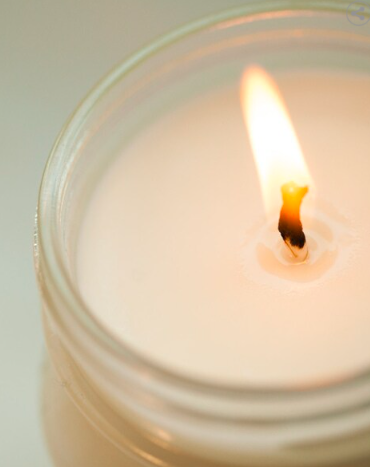9 tips for the perfect burning experience
- Michael Peyerk
- Jan 9, 2024
- 2 min read

Candle maintenance is a crucial aspect of ensuring the longevity, safety, and efficiency of your candles. Whether you are a candle enthusiast or simply enjoy the occasional flicker of a candlelit room, understanding the basics of candle care can significantly enhance your experience. In this blog post, we'll cover essential tips and tricks for proper candle maintenance.
1. Trimming the Wick:
The first and perhaps most important step in candle care is regularly trimming the wick. Before each burn, trim the wick to about 1/4 inch. This length is ideal for a steady, clean burn and helps prevent soot. A longer wick can cause the candle to burn too hot, leading to a larger flame, excessive flickering, and soot buildup on the jar. If you notice the flame getting too high or the candle smoking, extinguish it, let it cool, and then trim the wick.
2. The First Burn is Crucial:
When lighting a candle for the first time, make sure to burn it until the wax pool reaches the edges of the container. This process, known as "full melt pool," can take a few hours depending on the size of the candle. Achieving a full melt pool ensures an even burn in subsequent uses and prevents tunneling, where the candle burns down the middle, leaving a ring of unused wax along the sides.
3. Avoid Drafts:
Place your candle in a location free from drafts to prevent uneven burning and potential fire hazards. Drafts can cause the flame to flicker excessively, leading to a quicker burn rate, uneven burning, and soot deposits.
4. Keep it Clean:
Ensure your candle remains free of wick trimmings, matches, and other debris. These materials can act as secondary wicks, causing the candle to burn unevenly or too quickly. Additionally, they can pose a fire hazard if they catch fire.
5. Use a Snuffer:
When extinguishing your candle, consider using a candle snuffer. Blowing out a candle can cause hot wax to splatter and the wick to smoke. A snuffer safely extinguishes the flame without any mess or risks.
6. Store Properly:
When not in use, store your candles in a cool, dark place. Exposure to light and heat can cause the candle to fade, melt, or lose its fragrance. If your candle doesn't have a lid, consider using a candle topper or simply covering it to keep dust and debris out.
7. Avoid Burning to the Very Bottom:
For safety reasons, stop using your candle when about 1/2 inch of wax remains at the bottom. Continuing to burn past this point can overheat the container, potentially leading to a fire hazard.
8. Repurposing Jars:
Once your candle has reached its end, consider repurposing the jar. Clean it out and use it to store small items, as a planter, or for another DIY project.
9. Burn Time:
Lastly, avoid burning your candle for more than 4 hours at a time. Long burns can cause the wick to become unstable, leading to a dangerous flame and potentially causing the glass to overheat and crack.
By following these simple steps, you can ensure that your candle burns cleanly, safely, and efficiently, enhancing the ambiance and scent of your home. Remember, a little care goes a long way in extending the life of your candles.

Comments